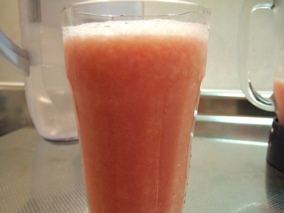Facts About 'Otai
ʻOtai is a refreshing fruit drink originating from western Polynesia, perfect for accompanying hearty meals. While it is now closely associated with Tongan cuisine, variations of ʻotai were historically enjoyed in places such as Uvea, Samoa, Futuna, Tokelau, Hawai'i, and Fiji.
In the 1890s, European colonists documented the original Samoan version. This drink was a simple yet delightful blend of grated ambarella fruit, young coconut meat, coconut milk, and water, typically chilled in large coconut shells.
Today's Tongan ʻotai commonly combines water, shredded coconut meat, and grated tropical fruits like watermelon, mango, and pineapple, with watermelon being a favorite. A touch of sugar is added to sweeten the mixture. Tongan historians note that modern recipes often include ingredients like milk, refined sugar, watermelon, mangoes, and pineapples—none of which are indigenous to Tonga. The traditional Tongan recipe was more similar to the Samoan one but featured the local mountain apple, known as fekika, instead of ambarella.
In Samoa, there is a clear distinction between native and introduced recipes. ʻOtai is specifically made with vi fruit. Drinks made with fruits introduced by Europeans have their own names: vai meleni for watermelon drink, vai mago for mango drink, and vai fala for pineapple drink. This engaging history highlights how traditional Polynesian beverages have evolved and adapted across different cultures in the Pacific.
